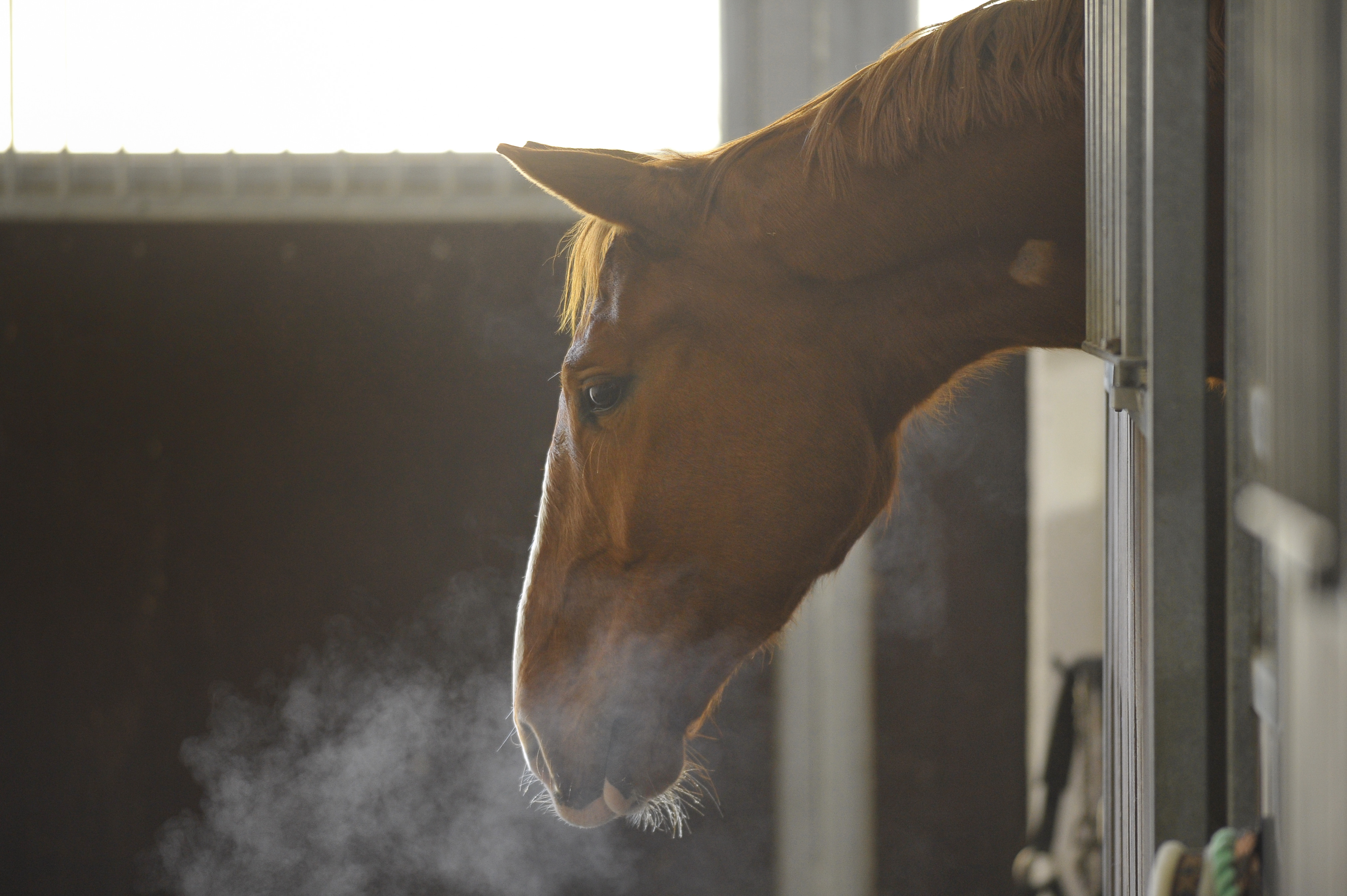No products
Welcome to the Lambey website
Select your country
Welcome to the Lambey website
Select your country
Blog Categories
Latest Posts
« Il faut être attentif à un suivi régulier des paramètres CK et AST, à un suivi nutritionnel drastique et à une bonne hydratation ... »

Myositis is a pathology that affects the muscles causing sudden stiffness and making it impossible to walk. The stiffness usually occurs after work whilst the horse is cooling down. Horses are more susceptible to this pathology in winter and in cold weather.
Animals in poor condition, with overweight or working beyond their level of fitness are also more at risk.
In terms of symptoms, the horse develops sudden, severe stiffness and signs of discomfort similar to colic, or abdominal pain. In sport horses, palpation will often reveal induration and spasms of the dorsal and gluteal muscles (croup). In most cases, the horse develops a tremor, moves more slowly and, when urinating, the flow may be irregular and very dark. This particular sign is known as myoglobinuria and is caused by muscle pigment (myoglobin) entering the urine.
|
The main known causes in sport horses include::
Riders sometimes refer to “Monday morning disease” because horses that undergo strenuous exercise during the weekend can suddenly find themselves at rest on the Monday and develop these signs. |
 |
During muscle contractions, there is a build-up of lactic acid (a bit like the exhaust fumes of metabolism) which, when it stagnates in the muscle cells, can destroy some of them causing the release of this internal pigment known as myoglobin.
Horses suffering from myositis suffer a period of dehydration and need a “detox”. The aim is to drain the lactic acid and “rinse out” the muscles and kidneys.
Beyond the scientific terms, this requires rapid muscle perfusion to restore normal hydration and electrolyte balance. It is important to monitor two key blood parameters, which are markers of muscle and liver function:
There is a significant increase in these substances after myositis. The normal laboratory range for CK is 150–250 IU. However, following myositis it can reach several thousand IU.
This level can rise very quickly (in the space of a few hours), but with appropriate treatment it returns to normal in a few days. AST takes longer to rise but can remain at an elevated level for several weeks in cases of severe or complicated liver disease. It is also the parameter used to determine whether the horse can resume a more intense level of work.
Given the above, horses at risk or those who have already shown signs of myositis must be monitored carefully for:
|
|
|
In practical terms, for horses prone to muscle stiffness and myositis, I recommend:
|
|||||||
|
|||||||
|